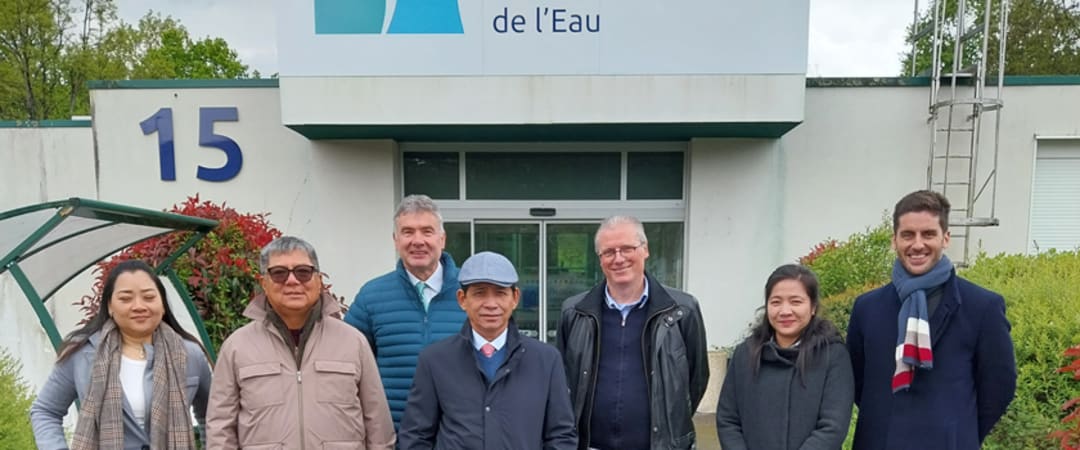A delegation from the Phnom Penh Water Supply Authority visits the OiEau training centre

At the end of April, a delegation made up of Mr. Long Naro, General Manager of the Phnom Penh Water Supply Authority (PPWSA), and two representatives of the Ministry of Industry, Science, Technology and Innovation (MISTI), which is responsible for urban drinking water in Cambodia, came to the OiEau Training Centre for a study trip.
Accompanied by the "South-East Asia" representatives of the AFD (French Development Agency) and the equipment manufacturer Saint-Gobain PAM, the delegation learned about OiEau's missions and activities, with a focus on training, and visited the teaching facilities at the Limoges and La Souterraine sites.
This mission comes ahead of a reflection on the need to strengthen the technical training of PPWSA's teams over the coming years.
Faced with the demographic and economic growth of the Phnom Pehn region, which is home to 15% of the country's population and the majority of industrial activities, PPWSA is faced with a very strong need to develop its human resources, both in terms of numbers and skills.
This need reflects two realities. Firstly, PPWSA currently has around 1,400 employees. Over the next six years, this number is expected to almost double, due to the increase in PPWSA's activity linked to the demographic and economic development of Cambodia's capital. This growth in staff numbers is combined with a strong need for renewal, with many current employees due to retire soon.
Mr Clochard, from AFD, and Mr Clemenceau, from Saint-Gobain PAM, talk to us about the water situation in Phnom Penh and the context of this visit.
We are currently at a turning point where the city is developing at a very fast pace and some of the staff of the Phnom Penh Water Supply Authority (PPWSA) are due to retire, at a time when water needs are growing very fast.
In this context, it was important for us that the General Manager of PPWSA could come to OiEau to understand what is proposed in terms of teaching, how training needs are conceived and how to respond to them.
There are various options for developing PPWSA's human resources, even though we are still only at the stage of defining flows, identifying annual training needs and analysing viability: is it appropriate to build a training centre for PPWSA in Phnom Penh? Or, on the contrary, would it make more sense to send PPWSA managers and technicians to be trained here, at OiEau? Or perhaps it would be better to decentralise this training to Phnom Penh on an ad hoc basis, to raise the general level of the water company's workforce?
There is also the option of a training centre that would also take on staff from the provincial water companies, which are much less developed than Phnom Penh, and whose training needs are also very great.
We are well upstream of the project, looking for benchmarks, feedback and advice on how best to respond to the problem of developing the capacity and human resources of the Phnom Penh water authority.
Nearly 2.5 million people are served in the capital region, with a leakage rate of around 8%, which is exceptionally low in South-East Asia and even in the world.
To maintain these good results, there is a need for long-term support on the issues of network management and maintenance, specifically for ductile iron mechanisation: what is the right replacement rate? What is the right replacement rate? Should 1% of the network be replaced every year?
We believe that OiEau is an essential partner if PPWSA and the provincial authorities are to prepare for the future with a view to quality. The more skills and knowledge that accumulate, the greater the desire to move towards quality materials and good network management.
That's why, after a visit to our plants in Lorraine, we thought it would be useful for the delegation to come and see the training centre in Limoges and La Souterraine.
Even though we are still at a very early stage in the process of setting up a training centre, I think that OiEau's contribution to the debate on the right model to adopt can provide real added value.

